This article includes a list of general references, but it lacks sufficient corresponding inline citations .(October 2022) |
This is a list of the last monarchs in the Americas.
This article includes a list of general references, but it lacks sufficient corresponding inline citations .(October 2022) |
This is a list of the last monarchs in the Americas.
| Nation / territory | Picture | Name | Birth | Ruled from | Rule Ceased | Reason | Death | Arms |
|---|---|---|---|---|---|---|---|---|
| Barbados |  | Elizabeth II Queen of Barbados | 21 April 1926 | 30 November 1966 | 30 November 2021 | Constitutional amendment | 8 September 2022 |  |
| Clipperton Island |  | Napoleon III Emperor of the French | 20 April 1808 | 2 December 1852 | 4 September 1870 | Abdication (Third Republic declared) | 9 January 1873 |  |
| Costa Rica |  | Augustine I Emperor of Mexico | 27 September 1783 | 19 May 1822 | 19 March 1823 | Abdication (Republic declared) | 19 July 1824 | 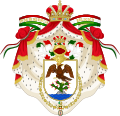 |
| Cuba |  | Alfonso XIII King of Spain (Under the regency of Maria Christina ) | 17 May 1886 | 10 December 1898 | Spanish–American War (Treaty of Paris) | 28 February 1941 | 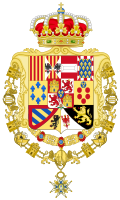 | |
| Dominica |  | Elizabeth II Queen of the United Kingdom of Great Britain and Northern Ireland | 21 April 1926 | 6 February 1952 | 3 November 1978 | Granted independence by the United Kingdom | 8 September 2022 |  |
| Dominican Republic |  | Napoleon I Emperor of the French | 15 August 1769 | 20 March 1804 | 2 May 1808 | Returned to Spain following the Peninsular War | 5 May 1821 | 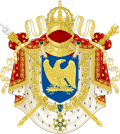 |
 | Isabella II Queen of Spain | 10 October 1830 | 1861 | 1865 | Dominican Restoration War | 10 April 1904 |  | |
| El Salvador |  | Augustine I Emperor of Mexico | 27 September 1783 | 19 May 1822 | 19 March 1823 | Abdication (Republic declared) | 19 July 1824 |  |
| Gonâve |  | Faustin II King of La Gonâve | November 1896 | 18 July 1926 | 1929 | Returned to Haiti | 8 October 1945 |  |
| Guadeloupe |  | Napoleon III Emperor of the French | 20 April 1808 | 2 December 1852 | 4 September 1870 | Abdication (Third Republic declared) | 9 January 1873 |  |
| Guatemala |  | Augustine I Emperor of Mexico | 27 September 1783 | 19 May 1822 | 19 March 1823 | Abdication (Republic declared) | 19 July 1824 |  |
| Haiti | 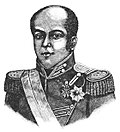 | Faustin I Emperor of Haïti | 1782 | 26 August 1849 | 15 January 1859 | Abdication (Republic declared) | 6 August 1867 |  |
| Honduras |  | Augustine I Emperor of Mexico | 27 September 1783 | 19 May 1822 | 19 March 1823 | Abdication (Republic declared) | 19 July 1824 |  |
| Martinique |  | Napoleon III Emperor of the French | 20 April 1808 | 2 December 1852 | 4 September 1870 | French defeated at Sedan (Third Republic declared) | 9 January 1873 |  |
| Mexico |  | Cuauhtémoc Tlatoani of Tenochtitlan Emperor of the Aztecs | 1502 | 1520 | 13 August 1521 | Surrendered to Spaniards | 1525 | |
 | Cacamatzin Tlatoani of Texcoco | 1483 | 1515 | 1520 | Murdered by Spaniards | 1520 | ||
 | Itzquauhtzin Tlatoani of Tlacateotl | unknown | 1475 | |||||
 | Nanacacipactzin Tlatoani of Tenochtitlan Spanish Governor of San Juan Tenochtitlan | unknown | 30 September 1563 | 27 December 1565 | Death Ceased to exist | 27 December 1565 | ||
 | Tlahuitoltzin Tlatoani of Texcoco Spanish Governor of Texcoco | unknown | 1540 | 1546 | Abdication | ? | ||
| Oquiztzin Tlatoani of Tlacateotl Spanish Governor of Tlacateotl | unknown | 1567 | 1579 | Abdication | ? | |||
 | Augustine I Emperor of Mexico | 27 September 1783 | 19 May 1822 | 19 March 1823 | Abdication (Republic declared) | 19 July 1824 |  | |
 | Maximilian I Emperor of Mexico | 6 July 1832 | 10 April 1864 | 15 May 1867 | Executed by Republicans (Republic declared) | 19 June 1867 |  | |
| Nicaragua |  | Augustine I Emperor of Mexico | 27 September 1783 | 19 May 1822 | 19 March 1823 | Abdication (Republic declared) | 19 July 1824 |  |
 | Robert II King of the Miskito Kingdom | 26 September 1872 | 11 November 1890 | 7 August 1894 | Expelled | 6 January 1908 | ||
| Panama |  | Ferdinand VII King of Spain | 14 October 1784 | 11 December 1813 | 28 November 1821 | Independence from Spain | 29 September 1833 |  |
| Saint Barthélemy |  | Oscar II King of Sweden and Norway | 21 January 1829 | 18 September 1872 | 16 March 1878 | Sold to France | 8 December 1907 | 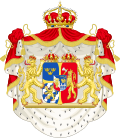 |
| Saint Martin |  | Napoleon III Emperor of the French | 20 April 1808 | 2 December 1852 | 4 September 1870 | Abdication (Third Republic declared) | 9 January 1873 |  |
| Saint Pierre and Miquelon | ||||||||
| Trinidad and Tobago |  | Elizabeth II Queen of Trinidad and Tobago | 21 April 1926 | 31 August 1962 | 1 August 1976 | Republican constitution adopted | 8 September 2022 |  |
| Nation / territory | Picture | Name | Birth | Ruled from | Rule Ceased | Reason | Death | Arms |
The Native American hereditary leaders during this time are not included. Those that are listed as former monarchs of what is now the continental United States were heads of European seated monarchies (or Mexican monarchs, such as Agustín I of Mexico and Maximilian I of Mexico) and themselves never set foot on American soil. Others were indigenous monarchs, such as Malietoa Tanumafili I, Tuʻi Manuʻa Elisala and Liliuokalani of Hawaii; The last monarch of each state and territory may not be the last colonial ruler (i.e. Louis XV is the last French monarch of Louisiana, but Napoleon Bonaparte, prior to becoming Emperor, was the last ruler of Louisiana). Also their end of reign may not be how the US acquired these states. One state can have more than one last monarch, since each state may have been the product of many different acquisitions by the United States. Different claims of a foreign country are taken into account.
| State | Picture | Name | Birth | Ruled from | Rule Ceased | Reason | Death | Arms |
|---|---|---|---|---|---|---|---|---|
| Alabama |  | George III King of Great Britain and Ireland | 4 June 1738 | 25 October 1760 | 14 January 1784 | American Revolution (Treaty of Paris) | 29 January 1820 | 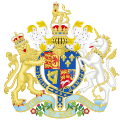 |
 | Louis XV King of France and Navarre | 15 February 1710 | 1 September 1715 | 13 November 1762 | French and Indian War (Treaty of Fontainebleau) | 10 May 1774 | 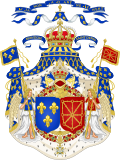 | |
 | Charles IV King of Spain | 11 November 1748 | 14 December 1788 | 30 November 1803 | Returned to France (Third Treaty of San Ildefonso) | 20 January 1819 |  | |
| Alaska |  | Alexander II Emperor and Autocrat of All the Russias | 29 April 1818 | 3 March 1855 | 30 March 1867 | Alaska Purchase | 13 March 1881 |  |
| Arizona |  | Augustine I Emperor of Mexico | 27 September 1783 | 19 May 1822 | 19 March 1823 | Abdication (Republic declared) | 19 July 1824 |  |
| Arkansas |  | Louis XV King of France and Navarre | 15 February 1710 | 1 September 1715 | 13 November 1762 | French and Indian War (Treaty of Fontainebleau) | 10 May 1774 |  |
 | Charles IV King of Spain | 11 November 1748 | 14 December 1788 | 30 November 1803 | Returned to France (Third Treaty of San Ildefonso) | 20 January 1819 |  | |
| California |  | Augustine I Emperor of Mexico | 27 September 1783 | 19 May 1822 | 19 March 1823 | Abdication (Republic declared) | 19 July 1824 |  |
 | Nicholas I Emperor and Autocrat of All the Russias | 6 July 1796 | 1 December 1825 | 1841 | Fort Ross sold to John Sutter | 2 March 1855 |  | |
| Colorado |  | Louis XV King of France and Navarre | 15 February 1710 | 1 September 1715 | 13 November 1762 | French and Indian War (Treaty of Fontainebleau) | 10 May 1774 |  |
 | Charles IV King of Spain | 11 November 1748 | 14 December 1788 | 30 November 1803 | Returned to France (Third Treaty of San Ildefonso) | 20 January 1819 |  | |
 | Augustine I Emperor of Mexico | 27 September 1783 | 19 May 1822 | 19 March 1823 | Abdication (Republic declared) | 19 July 1824 |  | |
| Connecticut |  | George III King of Great Britain | 4 June 1738 | 25 October 1760 | 14 January 1784 | American Revolution (Treaty of Paris) | 29 January 1820 |  |
| Delaware | ||||||||
| Florida |  | Ferdinand VII King of Spain | 14 October 1784 | 11 December 1813 | 22 February 1821 | Adams–Onís Treaty | 29 September 1833 |  |
| Georgia |  | George III King of Great Britain | 4 June 1738 | 25 October 1760 | 14 January 1784 | American Revolution (Treaty of Paris) | 29 January 1820 |  |
| Hawaii |  | Liliʻuokalani Queen of the Hawaiian Islands | 2 September 1838 | 29 January 1891 | 17 January 1893 | Overthrow of the Hawaiian Kingdom | 11 November 1917 |  |
| Idaho |  | Victoria Queen of the United Kingdom | 24 May 1819 | 20 June 1837 | 15 June 1846 | Oregon Treaty | 22 January 1901 |  |
| Illinois |  | George III King of Great Britain | 4 June 1738 | 25 October 1760 | 14 January 1784 | American Revolution (Treaty of Paris) | 29 January 1820 |  |
| Indiana | ||||||||
| Iowa |  | Louis XV King of France and Navarre | 15 February 1710 | 1 September 1715 | 13 November 1762 | French and Indian War (Treaty of Fontainebleau) | 10 May 1774 |  |
 | Charles IV King of Spain | 11 November 1748 | 14 December 1788 | 30 November 1803 | Returned to France (Third Treaty of San Ildefonso) | 20 January 1819 |  | |
| Kansas |  | Louis XV King of France and Navarre | 15 February 1710 | 1 September 1715 | 13 November 1762 | French and Indian War (Treaty of Fontainebleau) | 10 May 1774 |  |
 | Charles IV King of Spain | 11 November 1748 | 14 December 1788 | 30 November 1803 | Returned to France (Third Treaty of San Ildefonso) | 20 January 1819 |  | |
 | Augustine I Emperor of Mexico | 27 September 1783 | 19 May 1822 | 19 March 1823 | Abdication (Republic declared) | 19 July 1824 |  | |
| Kentucky |  | George III King of Great Britain | 4 June 1738 | 25 October 1760 | 14 January 1784 | American Revolution (Treaty of Paris) | 29 January 1820 |  |
| Louisiana |  | Louis XV King of France and Navarre | 15 February 1710 | 1 September 1715 | 13 November 1762 | French and Indian War (Treaty of Fontainebleau) | 10 May 1774 |  |
 | Charles IV King of Spain | 11 November 1748 | 14 December 1788 | 30 November 1803 | Returned to France (Third Treaty of San Ildefonso) | 20 January 1819 |  | |
 | Augustine I Emperor of Mexico | 27 September 1783 | 19 May 1822 | 19 March 1823 | Abdication (Republic declared) | 19 July 1824 |  | |
| Maine |  | George III King of Great Britain | 4 June 1738 | 25 October 1760 | 14 January 1784 | American Revolution (Treaty of Paris) | 29 January 1820 |  |
 | Victoria Queen of the United Kingdom | 24 May 1819 | 20 June 1837 | 29 August 1842 | Aroostook War (Webster-Ashburton Treaty) | 22 January 1901 |  | |
| Maryland |  | George III King of Great Britain | 4 June 1738 | 25 October 1760 | 14 January 1784 | American Revolution (Treaty of Paris) | 29 January 1820 |  |
| Massachusetts | ||||||||
| Michigan | ||||||||
| Minnesota |  | George III King of Great Britain | 4 June 1738 | 25 October 1760 | 14 January 1784 | American Revolution (Treaty of Paris) | 29 January 1820 |  |
 | Louis XV King of France and Navarre | 15 February 1710 | 1 September 1715 | 13 November 1762 | French and Indian War (Treaty of Fontainebleau) | 10 May 1774 |  | |
 | Charles IV King of Spain | 11 November 1748 | 14 December 1788 | 30 November 1803 | Returned to France (Third Treaty of San Ildefonso) | 20 January 1819 |  | |
 | George III King of United Kingdom (under the Regency Act 1811) | 4 June 1738 | 5 January 1811 | 20 October 1818 | Treaty of 1818 | 29 January 1820 |  | |
 | George IV Prince Regent | 12 August 1762 | 26 June 1830 | |||||
| Mississippi |  | George III King of Great Britain | 4 June 1738 | 25 October 1760 | 14 January 1784 | American Revolution (Treaty of Paris) | 29 January 1820 |  |
 | Louis XV King of France and Navarre | 15 February 1710 | 1 September 1715 | 13 November 1762 | French and Indian War (Treaty of Fontainebleau) | 10 May 1774 |  | |
 | Charles IV King of Spain | 11 November 1748 | 14 December 1788 | 30 November 1803 | Returned to France (Third Treaty of San Ildefonso) | 20 January 1819 |  | |
| Missouri |  | Louis XV King of France and Navarre | 15 February 1710 | 1 September 1715 | 13 November 1762 | French and Indian War (Treaty of Fontainebleau) | 10 May 1774 |  |
 | Charles IV King of Spain | 11 November 1748 | 14 December 1788 | 30 November 1803 | Returned to France (Third Treaty of San Ildefonso) | 20 January 1819 |  | |
| Montana |  | Louis XV King of France and Navarre | 15 February 1710 | 1 September 1715 | 13 November 1762 | French and Indian War (Treaty of Fontainebleau) | 10 May 1774 |  |
 | Charles IV King of Spain | 11 November 1748 | 14 December 1788 | 30 November 1803 | Returned to France (Third Treaty of San Ildefonso) | 20 January 1819 |  | |
 | Victoria Queen of the United Kingdom | 24 May 1819 | 20 June 1837 | 15 June 1846 | Oregon Treaty | 22 January 1901 |  | |
| Nebraska |  | Louis XV King of France and Navarre | 15 February 1710 | 1 September 1715 | 13 November 1762 | French and Indian War (Treaty of Fontainebleau) | 10 May 1774 |  |
 | Charles IV King of Spain | 11 November 1748 | 14 December 1788 | 30 November 1803 | Returned to France (Third Treaty of San Ildefonso) | 20 January 1819 |  | |
| Nevada |  | Augustine I Emperor of Mexico | 27 September 1783 | 19 May 1822 | 19 March 1823 | Abdication (Republic declared) | 19 July 1824 |  |
| New Hampshire |  | George III King of Great Britain | 4 June 1738 | 25 October 1760 | 14 January 1784 | American Revolution (Treaty of Paris) | 29 January 1820 |  |
| New Jersey | ||||||||
| New Mexico |  | Louis XV King of France and Navarre | 15 February 1710 | 1 September 1715 | 13 November 1762 | French and Indian War (Treaty of Fontainebleau) | 10 May 1774 |  |
 | Charles IV King of Spain | 11 November 1748 | 14 December 1788 | 30 November 1803 | Returned to France (Third Treaty of San Ildefonso) | 20 January 1819 |  | |
 | Augustine I Emperor of Mexico | 27 September 1783 | 19 May 1822 | 19 March 1823 | Abdication (Republic declared) | 19 July 1824 |  | |
| New York |  | George III King of Great Britain | 4 June 1738 | 25 October 1760 | 14 January 1784 | American Revolution (Treaty of Paris) | 29 January 1820 |  |
| North Carolina | ||||||||
| North Dakota |  | Louis XV King of France and Navarre | 15 February 1710 | 1 September 1715 | 13 November 1762 | French and Indian War (Treaty of Fontainebleau) | 10 May 1774 |  |
 | Charles IV King of Spain | 11 November 1748 | 14 December 1788 | 30 November 1803 | Returned to France (Third Treaty of San Ildefonso) | 20 January 1819 |  | |
 | George III King of United Kingdom (under the Regency Act 1811) | 4 June 1738 | 5 January 1811 | 20 October 1818 | Treaty of 1818 | 29 January 1820 |  | |
 | George IV Prince Regent | 12 August 1762 | 26 June 1830 | |||||
| Ohio |  | George III King of Great Britain | 4 June 1738 | 25 October 1760 | 14 January 1784 | American Revolution (Treaty of Paris) | 29 January 1820 |  |
| Oklahoma |  | Louis XV King of France and Navarre | 15 February 1710 | 1 September 1715 | 13 November 1762 | French and Indian War (Treaty of Fontainebleau) | 10 May 1774 |  |
 | Charles IV King of Spain | 11 November 1748 | 14 December 1788 | 30 November 1803 | Returned to France (Third Treaty of San Ildefonso) | 20 January 1819 |  | |
 | Augustine I Emperor of Mexico | 27 September 1783 | 19 May 1822 | 19 March 1823 | Abdication (Republic declared) | 19 July 1824 |  | |
| Oregon |  | Victoria Queen of the United Kingdom | 24 May 1819 | 20 June 1837 | 15 June 1846 | Oregon Treaty | 22 January 1901 |  |
| Pennsylvania |  | George III King of Great Britain | 4 June 1738 | 25 October 1760 | 14 January 1784 | American Revolution (Treaty of Paris) | 29 January 1820 |  |
| Rhode Island | ||||||||
| South Carolina | ||||||||
| South Dakota |  | Louis XV King of France and Navarre | 15 February 1710 | 1 September 1715 | 13 November 1762 | French and Indian War (Treaty of Fontainebleau) | 10 May 1774 |  |
 | Charles IV King of Spain | 11 November 1748 | 14 December 1788 | 30 November 1803 | Returned to France (Third Treaty of San Ildefonso) | 20 January 1819 |  | |
| Tennessee |  | George III King of Great Britain | 4 June 1738 | 25 October 1760 | 14 January 1784 | American Revolution (Treaty of Paris) | 29 January 1820 |  |
| Texas |  | Louis XV King of France and Navarre | 15 February 1710 | 1 September 1715 | 13 November 1762 | French and Indian War (Treaty of Fontainebleau) | 10 May 1774 |  |
 | Charles IV King of Spain | 11 November 1748 | 14 December 1788 | 30 November 1803 | Returned to France (Third Treaty of San Ildefonso) | 20 January 1819 |  | |
 | Augustine I Emperor of Mexico | 27 September 1783 | 19 May 1822 | 19 March 1823 | Abdication (Republic declared) | 19 July 1824 |  | |
| Utah |  | Augustine I Emperor of Mexico | 27 September 1783 | 19 May 1822 | 19 March 1823 | Abdication (Republic declared) | 19 July 1824 |  |
| Vermont |  | George III King of Great Britain | 4 June 1738 | 25 October 1760 | 14 January 1784 | Declaration of the Vermont Republic (Treaty of Paris) | 29 January 1820 |  |
| Virginia |  | George III King of Great Britain | 4 June 1738 | 25 October 1760 | 14 January 1784 | American Revolution (Treaty of Paris) | 29 January 1820 |  |
| Washington |  | Victoria Queen of the United Kingdom | 24 May 1819 | 20 June 1837 | 15 June 1846 | Oregon Treaty | 22 January 1901 |  |
| West Virginia |  | George III King of Great Britain | 4 June 1738 | 25 October 1760 | 14 January 1784 | American Revolution (Treaty of Paris) | 29 January 1820 |  |
| Wisconsin | ||||||||
| Wyoming |  | Louis XV King of France and Navarre | 15 February 1710 | 1 September 1715 | 13 November 1762 | French and Indian War (Treaty of Fontainebleau) | 10 May 1774 |  |
 | Charles IV King of Spain | 11 November 1748 | 14 December 1788 | 30 November 1803 | Returned to France (Third Treaty of San Ildefonso) | 20 January 1819 |  | |
 | Augustine I Emperor of Mexico | 27 September 1783 | 19 May 1822 | 19 March 1823 | Abdication (Republic declared) | 19 July 1824 |  | |
 | Victoria Queen of the United Kingdom | 24 May 1819 | 20 June 1837 | 15 June 1846 | Oregon Treaty | 22 January 1901 |  | |
| State | Picture | Name | Birth | Ruled from | Ruled until | Reason | Death | Arms |
| Territory | Picture | Name | Birth | Ruled from | Rule Ceased | Reason | Death | Arms |
|---|---|---|---|---|---|---|---|---|
| Navassa Island |  | Faustin I Emperor of Haïti | 1782 | 26 August 1849 | 15 January 1859 | Abdication | 6 August 1867 | |
| Puerto Rico |  | Alfonso XIII King of Spain (Under the regency of Maria Christina ) | 17 May 1886 | 10 December 1898 | Spanish–American War (Treaty of Paris) Ratified 6 February 1899 | 28 February 1941 |  | |
| Danish West Indies |  | Christian X King of Denmark | 26 September 1870 | 14 May 1912 | 31 March 1917 | Sold to the U.S. in the face of World War I | 20 April 1947 | 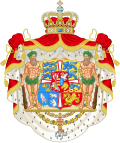 |
| Territory | Picture | Name | Birth | Ruled from | Ruled until | Reason | Death | Arms |
| Nation | Picture | Name | Birth | Ruled from | Rule Ceased | Reason | Death | Arms |
|---|---|---|---|---|---|---|---|---|
| Argentina |  | Atahualpa Sapa Inca | 1502 | 1532 | 26 July 1533 | Execution by Spaniards | 29 August 1533 |  |
 | Ferdinand VII King of Spain | 14 October 1784 | 11 December 1813 | 9 July 1816 | Independence from Spain | 29 September 1833 |  | |
| Bolivia |  | Atahualpa Sapa Inca | 1502 | 1532 | 26 July 1533 | Execution by Spaniards | 29 August 1533 |  |
 | Ferdinand VII King of Spain | 14 October 1784 | 11 December 1813 | 6 August 1825 | Independence from Spain | 29 September 1833 |  | |
| Brazil |  | Pedro II Emperor of Brazil | 2 December 1825 | 7 April 1831 | 15 November 1889 | Military coup d'état Republic declared | 5 December 1891 |  |
| Chile |  | Atahualpa Sapa Inca | 1502 | 1532 | 26 July 1533 | Execution by Spaniards | 29 August 1533 |  |
 | Ferdinand VII King of Spain | 14 October 1784 | 11 December 1813 | 12 February 1818 | Independence from Spain | 29 September 1833 |  | |
 | Quilapán Ñidol Longko of Araucanía | 1840 | 1861 | 1871 | Treaty of Peace Annexation of Araucanía | 1875 |  | |
 | Atamu Tekena Ariki Mau of Rapa Nui | 1850 | 1883 | 9 September 1888 | Protectorate declared Annexation of Easter Island | August 1892 |  | |
| Colombia |  | Atahualpa Sapa Inca | 1502 | 1532 | 26 July 1533 | Execution by Spaniards | 29 August 1533 |  |
 | Joseph Bonaparte King of Spain | 7 January 1768 | 6 June 1808 | 20 July 1810 | Independence from Spain | 28 July 1844 |  | |
| Ecuador |  | Atahualpa Sapa Inca | 1502 | 1532 | 26 July 1533 | Execution by Spaniards | 29 August 1533 |  |
 | Ferdinand VII King of Spain | 14 October 1784 | 11 December 1813 | 24 May 1822 | Independence from Spain | 29 September 1833 |  | |
| French Guiana |  | Napoleon III Emperor of the French | 20 April 1808 | 2 December 1852 | 4 September 1870 | Abdication (Third Republic declared) | 9 January 1873 |  |
 | Pedro II Emperor of Brazil | 2 December 1825 | 7 April 1831 | 15 November 1889 | Independent state formed in 1886 | 5 December 1891 |  | |
| Guyana |  | Elizabeth II Queen of Guyana | 21 April 1926 | 26 May 1966 | 23 May 1970 | Republican constitution adopted | 8 September 2022 |  |
| Paraguay |  | Joseph Bonaparte King of Spain | 7 January 1768 | 6 June 1808 | 15 May 1811 | Independence from Spain | 28 July 1844 |  |
| Peru |  | Atahualpa Sapa Inca | 1502 | 1532 | 26 July 1533 | Execution by Spaniards Abolition of the Inca Empire | 29 August 1533 |  |
 | Túpac Amaru Sapa Inca | 1545 | 1571 | 1572 | Execution by Spaniards Destruction of the last remnants of the Inca State | 24 September 1572 | ||
 | Túpac Amaru II Sapa Inca | 1742 | 26 November 1780 | 18 May 1781 | Execution by Spaniards End of Aymara and Quechua rebellions | 18 May 1781 |  | |
 | Ferdinand VII King of Spain | 14 October 1784 | 11 December 1813 | 28 July 1821 | Independence from Spain | 29 September 1833 |  | |
| Suriname |  | Juliana Queen of the Netherlands | 30 April 1909 | 6 September 1948 | 25 November 1975 | Independence from the Netherlands | 20 March 2004 | 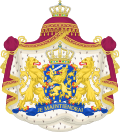 |
| Uruguay |  | Pedro I Emperor of Brazil | 12 October 1798 | 12 October 1822 | 28 August 1828 | Cisplatine War Treaty of Montevideo | 24 September 1834 |  |
| Venezuela |  | Joseph Bonaparte King of Spain | 7 January 1768 | 6 June 1808 | 5 July 1811 | Independence from Spain | 28 July 1844 |  |
| Nation | Picture | Name | Birth | Ruled from | Rule Ceased | Reason | Death | Arms |